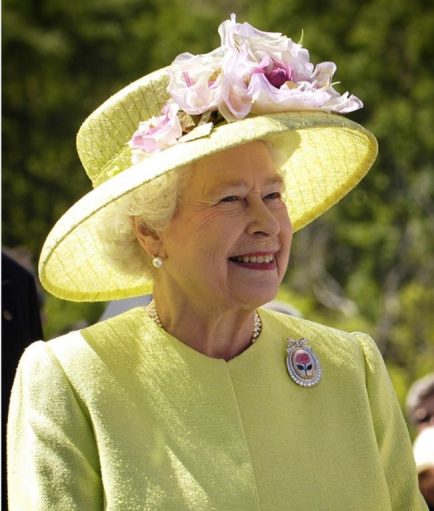News about the coronavirus outbreak that started in Wuhan, China, is changing rapidly. The respiratory infection, named COVID-19 by the World Health Organization (WHO), is closely related to SARS and MERS. The majority of cases are no longer in China, and the disease has been diagnosed in more than 100 other countries, including the United States. We’ll provide the latest updates on cases, deaths, travel restrictions, and more here.
What is the latest news?
Italy Marks Gruesome Milestone
Italy now has more deaths from the new coronavirus than any other country.
Earlier today, Italian officials announced that 475 citizens there have died from the virus in just one day, raising the total number of deaths to 3,405. That surpasses the 3,250 deaths reported in China.
In all, Italy now has 41,035 total cases, second only to China’s 81,238.
Small Italian Study Shows Fatalities Linked to Other Conditions
A new study from the Italian national health authority reports that more than 99% of those who have died from the coronavirus there had other medical problems. However, the study only looked at the backgrounds of 18% of the nearly 3,000 people who have died, which means of the estimated 536 cases investigated, 531 had a pre-existing condition.
Italy has more cases of COVID-19, the disease caused by the new coronavirus, than any country outside China. As of Thursday morning, more than 35,000 Italians were infected. Prime Minister Giuseppe Conte has ordered much of the country shut down until at least April 3, halting much of the country’s economy, limiting internal travel and closing most businesses.
China Reaches Milestone in Coronavirus Fight
For the first time since the new coronavirus outbreak began in December, China — once the epicenter of what would become a global pandemic — reported no new domestic cases Thursday. The National Health Commission, however reported 34 new cases, all of which were imported from outside China. It’s been 81 days since the first case was announced in Wuhan, China. There have been more than 81,000 cases in China and more than 3,200 deaths there.
Meanwhile, the number of cases in the United States continues to spike. The country added more than 3,700 cases since Wednesday. The total now stands at 10,272 cases and 151 deaths. More than 4,000 of those cases are in New York alone.
The virus completely encompassed the United States on Wednesday as West Virginia Gov. Jim Justice announced his state’s first confirmed case. The Moutaineer State has now added a second case of COVID-19, the disease caused by the new coronavirus. The number of global cases has passed 220,000 according to Johns Hopkins University, which has been tracking cases worldwide. Hot spots continue to balloon across Europe and, for the first time, the virus is threatening to spread across all of Africa.
President Donald Trump announced Wednesday that he was sending two Navy hospital shifts to major cities in need of medical help. One, the USNS Comfort will head to New York and the USNS Mercy, now docked in San Diego, will sail for a west coast city to be determined. Both require work before being placed into service.
“They can launch over the next week or so,” Trump said.
In an effort to boost testing efforts across the country, Trump also said he is asking the FDA to speed up potential approval of a home test for coronavirus. “The groups are working on determining if a ‘self-swab’ by an individual is as effective as the other.”
Deborah Birx, MD, White House Coraonvirus Task Force response coordinator, said getting private labs to help with testing has eased the logjam of collected specimens. It also, she warned, will likely mean a week or more of much higher numbers of confirmed cases. “Our curves will not be stable until some time next week,” she said.
In other updates:
Trump announced he and Canadian Prime Minister Justin Trudeau have agreed to close their respective borders to tourists and non-essential travel. Exceptions will be made for trade, he said.
The Housing and Urban Development agency will halt all foreclosures and evictions in HUD properties until the end of April.
The White House on Wednesday urged all doctors and hospitals to postpone non-essential medical and dental procedures but left it to the states to decide whether to enact bans.
The coronavirus’ impact on American life continues to grow. More retail stores started closing their doors, the Kentucky Derby was moved to the fall, and New York City Mayor Bill DeBlasio said he was considering a “shelter in place” order for the city. More states enacted measure to close bars and restaurants, and Ohio cancelled its presidential primary. Actor Idris Elba and Brooklyn Nets star Kevin Durant joined the ranks of people testing positive for the virus.
The White House earlier this week urged people across the country to avoid gatherings of more than 10 people, to avoid eating at or visiting bars, restaurants, and food courts, and to avoid discretionary travel. The guidelines are in effect for 15 days, and will be reevlauated after that.
Trump also, however, said he was not yet ready to call for a nationwide quarantine or curfew.
“We’ve made the decision to further toughen the guidelines and blunt the infection now,” Trump said. “We’d much rather be ahead of the curve than behind it.”
“With several weeks of focused action, we can turn the corner,” he said. Yet Trump also warned that the outbreak could last until “August, could be July, could be longer than that.” Many schools and universities are closed, and people who can are being asked to telework.
Officials also said they will reconsider the guidelines after 15 days and that they may need to be extended. The guidance came the same day Anthony Fauci, MD, director of the National Institute of Allergy and Infectious Diseases, said that the first human trials of a potential vaccine began in Seattle.
Earlier this week, the Trump administration announced efforts it said will bring coronavirus testing into a new phase this week. Vice President Mike Pence said at a Sunday news briefing that more than 1.9 million tests will become available and more than 2,000 labs are ready to process them quickly.
At the same time, the U.S. Public Health Service is working with the Federal Emergency Management Agency (FEMA) to set up drive-through and walk-up sites in all 50 states. Tests will be prioritized for health care workers, first responders, and people in the highest risk groups, including
anyone over 65 years old and people with compromised immune systems. The new sites should be able to conduct 2,000 to 4,000 tests a day and will be set up on a rolling basis, officials said.
They warned that the ramped up testing will cause a spike in the number of positive cases. “The worst is yet ahead for us,” said Fauci. “It is how we respond to the challenge that is going to determine what the ultimate endpoint is going to be.”
While public health officials warn of more cases to come, they say that the risk to the public remains low. Data in China showed that about 80% of cases there were mild. People at higher risk of having more severe cases include those over 65 and people with underlying conditions or compromised immune systems.
U.S. Health and Human Services Alex Azar said the goal of public health efforts is to delay and “flatten the curve” of cases to prevent hospitals from running out of capacity to care for sick people.Measures to combat the virus escalated after the WHO called it a pandemic last week.
How many people have been diagnosed with the virus, and how many have died?
According to the European CDC, about 42% of the global cases are in China. More than 80,000 are confirmed outside of China in 150 countries and regions and every continent except Antarctica. Italy, Iran, and Spain are the countries with the most cases outside of China. The virus has caused more than 9,000 deaths worldwide.
Italy, Iran, and Spain have the most deaths outside China.
How many cases of COVID-19 are in the United States?
There are more than 10,000 cases in the U.S. of COVID-19 and 151 deaths. That number includes 46 cruise ship passengers that tested positive among the more than 300 evacuated by the U.S. last month and another three cases in people repatriated to the U.S. from China.
Cases in the U.S:
- New York: 4,152
- Washington: 1,187 (includes 4 evacuated passengers)
- California: 897 (includes 24 people evacuated from China)
- New Jersey: 427
- Florida: 328
- Illinois: 288
- Louisiana: 280
- Massachusetts: 256
- Colorado: 216
- Georgia: 197
- Pennsylvania: 133
- Texas: 130 (includes 8 evacuated passengers)Michigan: 116
- Wisconsin: 106
- Tennessee: 98
- Connecticut: 96
- Ohio: 88
- Maryland: 85
- Minnesota: 77
- Virginia: 77
- Oregon: 75
- North Carolina: 69
- Utah: 63
- Nevada: 82
- South Carolina: 60
- Nebraska: 52 (includes 15 evacuated cruise ship passengers, 7 have since been released)
- Alabama: 51
- Maine: 42
- Indiana: 39
- Washington, DC: 39
- Iowa: 38
- Arkansas: 37
- Kentucky: 35
- Mississippi: 34
- Rhode Island: 33
- Oklahoma: 29
- New Mexico: 28
- Arizona: 27
- New Hampshire: 26
- Delaware: 26
- Kansas:22
- Missouri: 22
- Vermont: 19
- Wyoming: 18
- Hawaii: 16
- South Dakota: 11
- Montana: 12
- Idaho: 11
- North Dakota: 7
- Alaska: 6
- West Virginia: 2
Not known: 4 (One cruise ship passenger who tested positive in Japan but was negative before returning home, and 3 other cruise ship passengers).
Deaths in the U.S.:
Washington state: 66. Twenty-nine are associated with the Life Care Center skilled nursing facility in King County, Washington.
New York: 21. One, a 65-year-old man from Suffern, northwest of New York City, had significant health problems, officials said. The second, an 82-year-old woman, died in Brooklyn on Friday. Others include a 79-year old woman with heart failure and lung disease, a 78-year-old man with multiple underlying conditions, a 56-year-old man with diabetes, and a 53-year-old woman with diabetes and heart disease.
California: 18. One was in an elderly person from Placer County who had recently gone on a Princess cruise to Mexico. The other was a woman in her 60s from Santa Clara County. The third was in a woman in her 90s who lived in assisted living. The fourth was in a woman in her 60s who had traveled overseas. She died in Los Angeles County but is not a resident there.
Florida: 8. They include a patient in Santa Rosa County who had recently been on an international trip; a person in their 70s who tested positive in Lee County after an international trip, and a 77-year-old man from Lee County.
Lousiana: 7.
New Jersey: 5. The state’s first death was in a man in his 60s from Bergen County. The second is a woman in her 50s from Monmouth County.
Georgia: 3. The state’s first death was in a man in his 60s with underlying conditions. The two most recent deaths came in Albany, a town in the southwest portion of the state.
Oregon: 3. The first case was an older man being treated at Portland Veterans’ Affairs Medical Center.
Texas: 3
Colorado: 2. A female in her 80s from El Paso County, near Denver. Louisiana: 3. The first was a 58-year-old from the New Orleans are who had underlying health conditions. Second was a 53-year-old from New Orleans, also with underlying medical conditions. Third was an 84-year-old.
Indiana: 2. The first death was a patient was in their 60s with underlying medical conditions.
Virginia: 2
Kansas: 1. A man in his 70s was taken to a hospital and died shortly after. He tested positive for COVID-19 afterward. The man had been living in a long-term care facility in Wyandotte County, which shares a border with Missouri. South Dakota: 1. A man in his 60s from Pennington County. Gov. Kristi Noem said he had underlying health conditions. Virginia: 1. The patient was a man in his 70s. The source of his infection is not known. Nevada: 1. A man in his 60s with underlying conditions. South Carolina: 1. An elderly person from Lexington County, west of Columbia.
Kentucky: 1. A 66-year-old man from Bourbon County, east of Frankfurt.
Maryland: 1. A man in his 60s from Prince George’s County.
Michigan: 1.
Missouri: 1.
South Dakota: 1.
What are public officials doing to contain the virus?
The U.S. is banning all foreign travel to the United States from most of Europe for the next 30 days beginning midnight Friday, March 13. American citizens are not included in the ban. On Saturday, Trump said he would extend the ban to include the UK and Ireland.
The CDC said it has worked with states to expand testing for the virus. The agency says that 79 state and local public health labs in 50 states and the District of Columbia are currently using COVID-19 tests.Robert Redfield, MD, director of the CDC, said during congressional testimony this week that the cost of the coronavirus tests and treatment will both be covered by private insurance, something both President Trump and Vice President Mike Pence have said would happen, too. It differs, however, from what private insurance companies have publicly committed to doing. The FDA, which must approve new medical tests, gave emergency approval to Roche for a fast-response test the testing giant has developed. The company says its equipment can examine more than 1,400 tests in 24 hours.
All of these developments came after the WHO called the coronavirus outbreak a pandemic, acknowledging worldwide spread of the disease. At a news briefing, WHO Director-General Tedros Adhanom Ghebreyesus said he was alarmed by the spread and severity of the disease along with “alarming levels of inaction” in how some countries are dealing with it.
He said while he was concerned about fear the word might cause, he hoped to galvanize response by calling it a pandemic. Spread of the virus can still be contained, he said.
Describing the outbreak as a pandemic doesn’t change what the WHO is doing and it shouldn’t change what countries are doing, he said.
“We should double down and be more aggressive,” Tedros said.
In addition to testing people who have symptoms and have recently traveled to areas where the infection is spreading, like China, Italy, and Japan, the CDC also plans to begin testing people with pneumonia that isn’t caused by the flu through it’s influenza-like illness surveillance network.
Previously, the agency would only accept a test if the patient had traveled to China or had close contact with someone who had been there.
Officials and businesses are working together to halt the spread of the virus. Sports leagues have suspended or canceled play; conferences, festivals, and events are canceled; and many schools and universities have closed or are doing online classes.
The U.S. is banning any foreign visitors who have come from China and Iran from entering the country, and this week Trump extended that ban to most foreign nationals traveling from Europe.
The quarantining of people returning to the U.S. from China appears to have succeeded, as there have limited reports of the evacuees contributing to the skyrocketing number of U.S. cases.
Fauci, of the National Institute of Allergy and Infectious Diseases, said the strict precautions are warranted because of “the issue now with this is that there are a lot of unknowns.”
He pointed out that the number of cases “has steeply inclined each and every day.”
We now know for certain that a person without symptoms can transmit the disease, Fauci said.
Health officials also clarified the distinctions between isolation and quarantine. Isolation is used to keep a person who’s already sick from infecting others. Quarantines restrict the movement of someone who has been exposed but is not yet sick.
The CDC recently urged people to prepare for spread of the coronavirus, warning that it was likely to become more common in the U.S.
“Disruption to everyday life might be severe,” Messonnier said. “It’s not so much of a question of if this will happen in this country anymore but a question of when this will happen.
“We are asking the American public to prepare for the expectation that this might be bad.”
Which countries have travel restrictions?
The U.S. State Department has advised against travel to China and Iran, issuing a Level 4 advisory.
The CDC has also issued a Level 3 travel advisory for South Korea, Iran, and most of Europe. That means people should avoid non-essential travel. There is a Level 2 global outbreak notice. Level 2 means that older people and people with chronic conditions should consider postponing non-essential travel. Also, most foreign nations traveling from Europe, and foreign nationals from China and Iran are temporarily banned from entering the U.S.
The CDC also recommends that all travelers, and especially those with underlying conditions, avoid cruise ship travel. Passengers in higher risk categories should also avoid planes and large gatherings, the agency says.
Original article: https://www.webmd.com/lung/news/20200124/coronavirus-2020-outbreak-latest-updates




























Comments